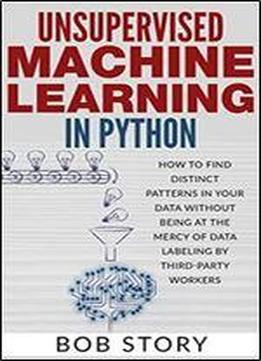
Unsupervised Machine Learning In Python: How To Find Distinct Patterns In Your Data Without Being At The Mercy Of Data Labeling By Third-party Workers
by Bob Story /
2017 / English / EPUB
140.7 KB Download
Discover How to Put Machine Learning On Autopilot and Execute tasks with ZERO supervision on Your Part!
Machine learning is one of the most fascinating aspects of data science. It allows you to find patterns, figure out information, and make smart decisions without having to always be present at the computer.
But until recently, humans had to constantly show machines how to adapt and take on new challenges machines weren’t autonomous or self-taught, so to speak.
But today, that’s all changed!
Current technology has allowed machines to figure out patterns and learn as they go.
A perfect example would be a search engine. Sure, programmers put in basic information to get things started, but there are myriad things the search engine (the machine) must learn on its own along the way without the oversight and input of another human being.
Just imagine how much free time this gives you…and how nice it’ll be to NOT have to sift through millions of data numbers yourself.
Essentially, when you learn unsupervised machine learning you won’t have to mess around with putting in code in order to teach machines how to do things—instead they can learn by the choices you or the user make, and can get better over time.
And if all this seems complicated or over your head, don’t worry—I’ve got you covered.
This info-packed guide will show unsupervised machine learning with easy, step-by-step instructions.
When you download this guide you’ll discover:
How to work with unsupervised machine learning
The probability density function (PDF) and how to use it
Latent variables and the missing or unknown causes data
Dimensionality reduction
A variety of algorithms to help you create a more useful picture of your data
How to use K-Means Clustering
The benefits of soft and fuzzy K-means and how to use them
The K-means objective function
How to add the soft K-means into code
Gaussian mixture models
How to code using GMM
How to work with singular covariance problems
Principal components analysis (or PCA)
How to use de-correlation with PCA
Visualizing a term-document matrix
How to build clusters using hierarchical clustering
And much, much more!











